Like so many others, Jason Orme grew up loving Led Zeppelin, Jimi Hendrix and The Beatles. Also like so many others, he began playing guitar in school.
“My seventh grade friend Bob was already playing bass,” he recalls. “One day he said, ‘If you played guitar we could have a band!’ That was it.” He didn’t secure a guitar until he was 14, though. “I convinced my mom to buy me this $30 nylon-string at a record store one day. I still have that guitar!”
Orme went on to land pit-stop gigs with pop icons Kelly Clarkson and Sarah McLachlan, before settling in for the long haul in 2001 with Alanis Morissette. He didn’t plan that career path. “My dream would have been to have my own successful band and travel the world playing our music,” he admits.
“I didn’t expect I’d end up playing with someone as amazing as Alanis, and also get the opportunity to play with other great artists in my time off. I think I have a pretty good ear for playing something melodic and playing parts that serve the songs I’m hired to play on. I’m proud that, so far, I’m making a living as a guitar player. I hope it continues.”
Did you have an idea of the type of player you wanted to be?
“I just wanted to be in a band. I really wanted to be on stage playing for people, playing songs that people would love, and getting to play guitar in that form. I loved Van Halen by then because I was a fan of the songs, and it was also a showcase for Edward’s amazing guitar playing. I didn’t try to copy his style, though, because he said not to in his interviews!”
What led to you turning pro?
“I worked in a music store into my late 20s, playing in a bunch of different bands and trying to get something going. A dear friend and bass player, Matt Chidgey, was in the store one day told me I’d be good in this disco cover band he was doing.
“It was different from a regular Top 40 covers gig because they were wearing costumes and played characters in the stage. It was really popular in the mid to late ’90s, and we were making real money – plus I was having a blast and making great friends.
“I managed to start making enough to become a full-time musician, playing those gigs while still working on my own original bands. Those were my first proper gigs, even though I’d already played every club in the LA and Hollywood area already.”
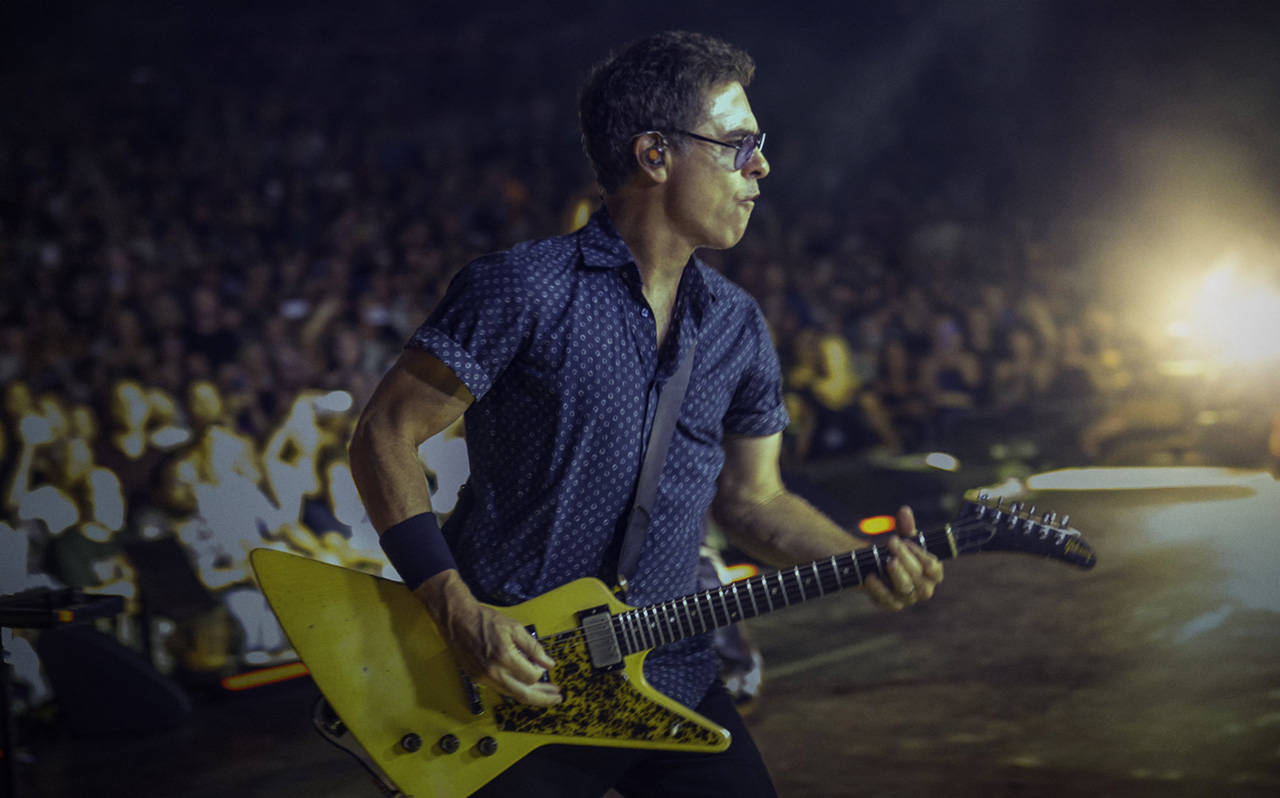
How did you land the Alanis Morissette gig?
“One of my dear friends, Joel Shearer, had been with her for a few years. When she decided to hire a new band in 2001, he put my name into the hat for auditions. I felt a little weird about it at first – Joel is a good friend, and the possibility of taking his job seemed strange!
“I hadn’t really auditioned for established touring bands before. She already had Eric Avery on bass and Zac Rae on keyboards, and they were looking for two guitar players and a drummer when I came in. I went in on a Friday, played the three songs I was asked to learn and went home.
“They called me back the next day to play with Alanis and a different guitar player, Dave Levita, who’d wind up getting the gig with me. I got a call later to come in again on Sunday to play with another guitar player. Then I got a call to come in again on Monday. So it was a little nerve-wracking for a couple of days!
“But when I pulled up on Monday, the tour manager offered me the gig; and I’ve been with her ever since. It’s such a lucky position to be in – she’s an amazing artist to play with and get to know. So wildly talented.”
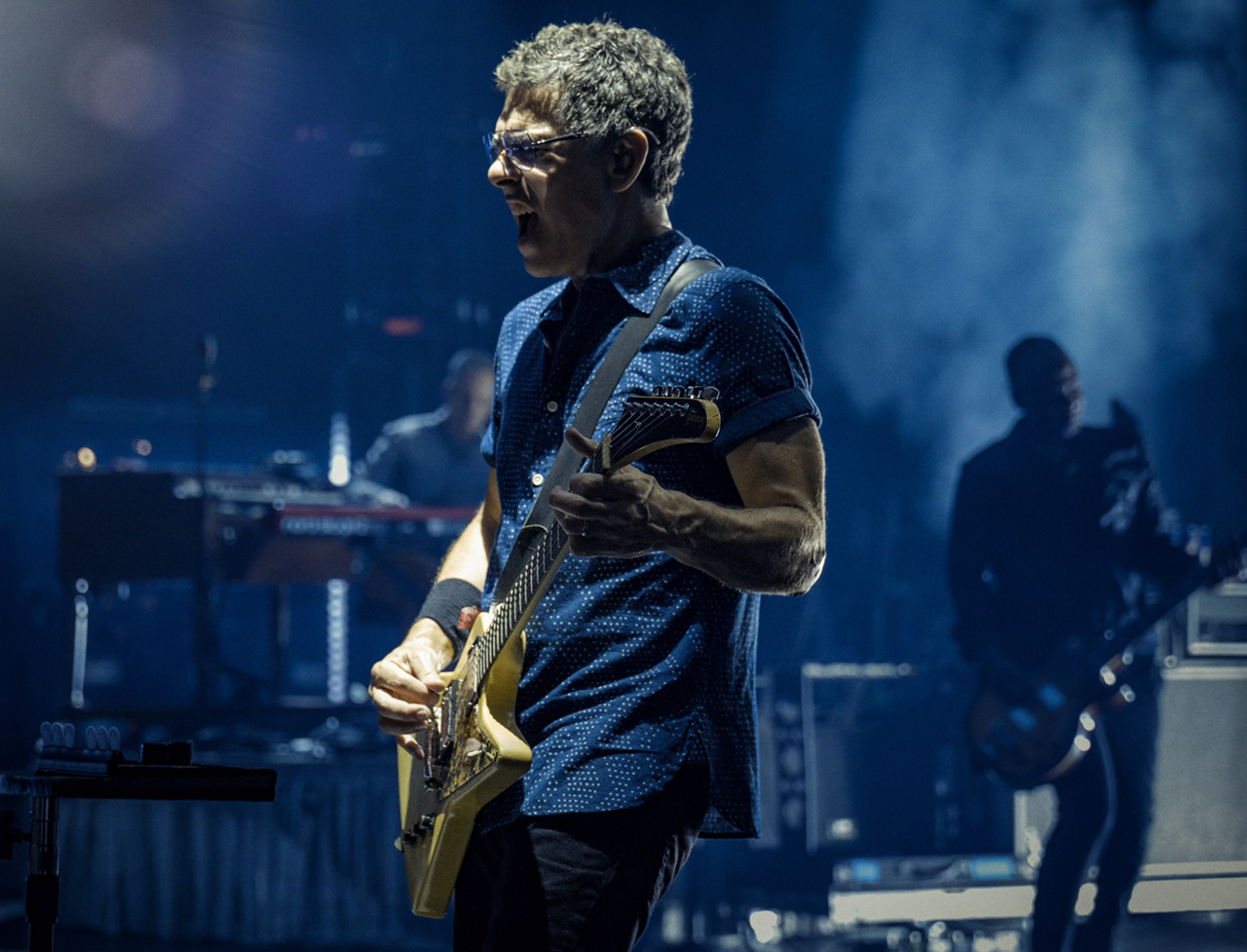
Dave Navarro and Glen Ballard played on Jagged Little Pill. How do you tackle those songs?
“I think Dave played guitar on You Oughta Know. Glen played a lot of the guitar on the record, and I think there were a few others as well. We’ve done different versions of those songs over the years. Recently we toured for the 25th anniversary of that record, and we all tried to stick to the original versions of the songs, while still kind of making them our own.”
What’s the secret sauce to your tone with Alanis?
“Part of what I love is running two different amps together. I like the amps to have that edge of breakup thing where, when I play a humbucker guitar and hit it a bit harder, you hear the amps react.
The simple parts leave you open to mistakes. I don’t want to mess up Ironic when the whole audience is singing along!
“Then I use pedals for extra gain. I also tend to stick to single coil-type guitars when I need a cleaner tone, since I don’t use a dedicated clean channel. I also started having Dave Phillips from LA Sound Design build my pedal boards in 2012. He convinced me to start using a programmable looper from RJM, which has been amazing for setting up sounds for each song.”
Does Alanis give much feedback to her guitarists?
“She does occasionally, but she also gives us a lot of freedom to interpret her songs. We all have an understanding that the songs need to sound like the songs – but we do get to add our own little touches and style.
“She’ll definitely point out certain parts when there’s something she wants to hear. She’s really encouraging; she’ll dig in with the band to work out ideas for the show.”
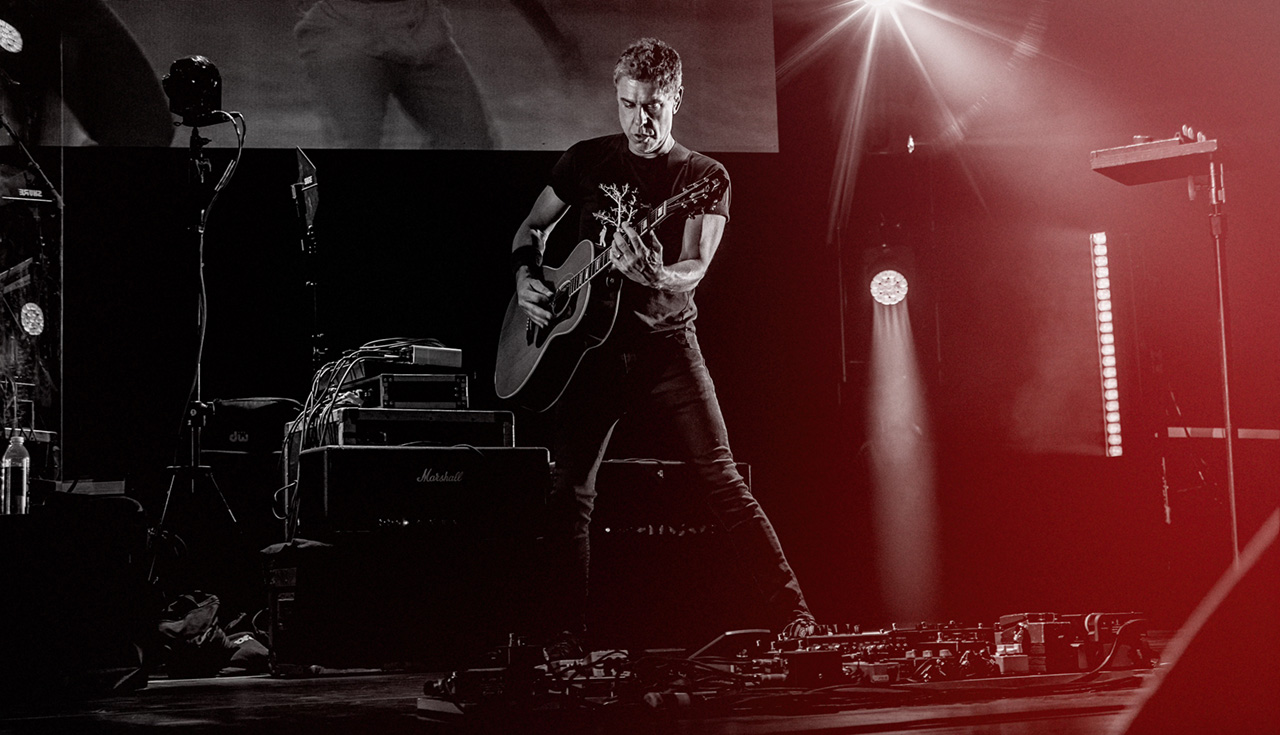
What’s the most challenging song in the set?
“One of her recent songs, Smilingis a bit of a challenge – and it’s also a lighting challenge! I have a solo at the end with lots of strobe and flashing lights. I ended up making up something so I could basically play it with my eyes closed and not go blind!
“I also mentioned the song Ironic to a friend the other day. I play acoustic on that one. It’s an easy enough song to play, but I can’t be distracted because it’s always the simple parts that leave you open to mistakes. I don’t want to mess that one up when the whole audience is singing along!”
If you had to boil your rig down to one guitar, one pedal and one amp, could you do it?
“It’s probably easier than ever these days: my main Les Paul, the Line 6 HX Stomp and my Marshall, Divided by 13, Vox AC30. I have an old Fender Deluxe Reverb that I love too. I realize I’m kind of cheating with the Stomp, but it is one pedal! I could do it with one overdrive box or maybe a delay, I suppose.”
So you’re still using real amps and not modelers.
“On tour I bring my ’73 Marshall Super Lead head and my Divided by 13 head that Fred made for me back in 2002. It’s an ERT 33 with EL84 tubes, kind of Vox-like. We have a quiet stage and we’re on in-ears, so I started using the Two Notes Captor X boxes as my ‘cabinets.’ They sound great.
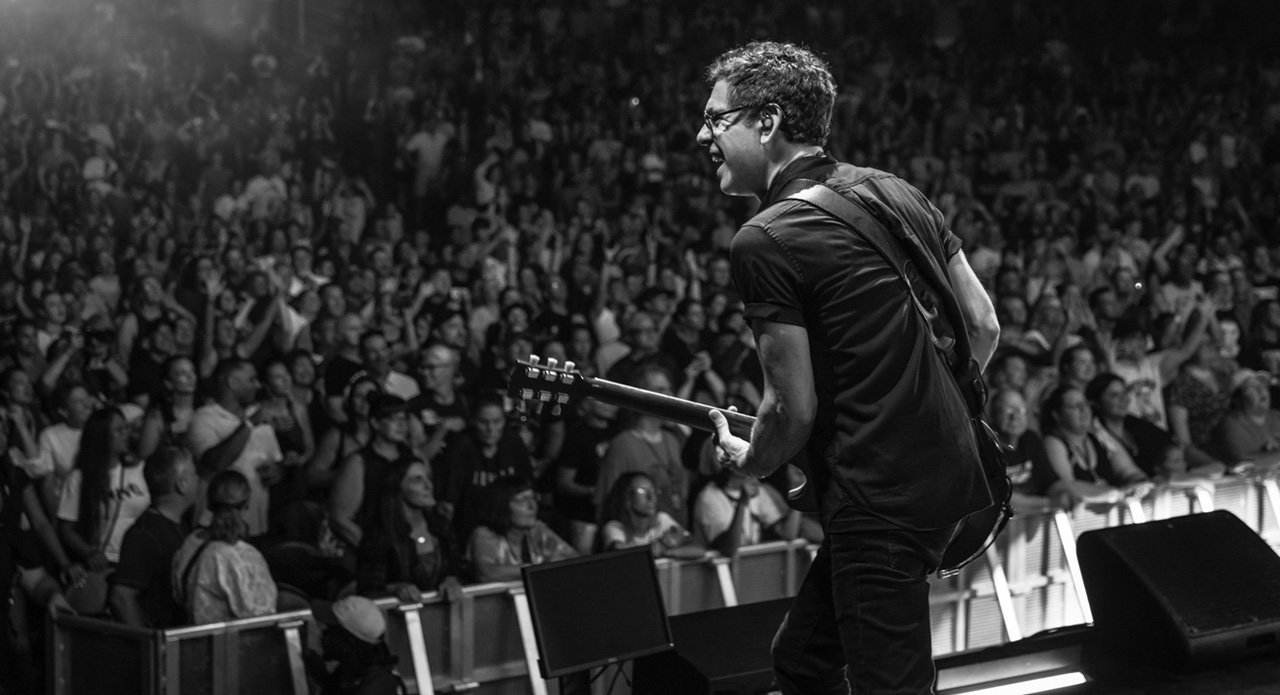
“So I guess I’m kind of riding the line between real amps and modeling cabinets. I’ve used the HX Stomp modeling amps for some things, and they sound great.
“I’m in the process of building a sort of B rig for the touring we have coming up, and I just got the IR-X and IR-D pedals from Friedman. I like those because they’re basically the same as what I’m running now – tube preamp in the front and cabinet modeling on the outputs.
I can get what I’m looking for with the modeling stuff… but I lean more toward using a real tube amp
“I was going back and forth between those and my amps at my studio, and they really sound great. I can usually get what I’m looking for with the modeling stuff. I definitely needed to set some tweaking time aside to really learn how to use this stuff to get what I want. But I lean more toward using a real tube amp whenever I can.”
How did you end up working with Sarah McLachlan?
“My pal Vincent Jones was the keyboard player with Alanis on our 2008 tour; he’d been playing with Sarah for many years, and still does. He brought me in when she needed a guitar player in 2010. It was me and the great Peter Stroud on guitar.
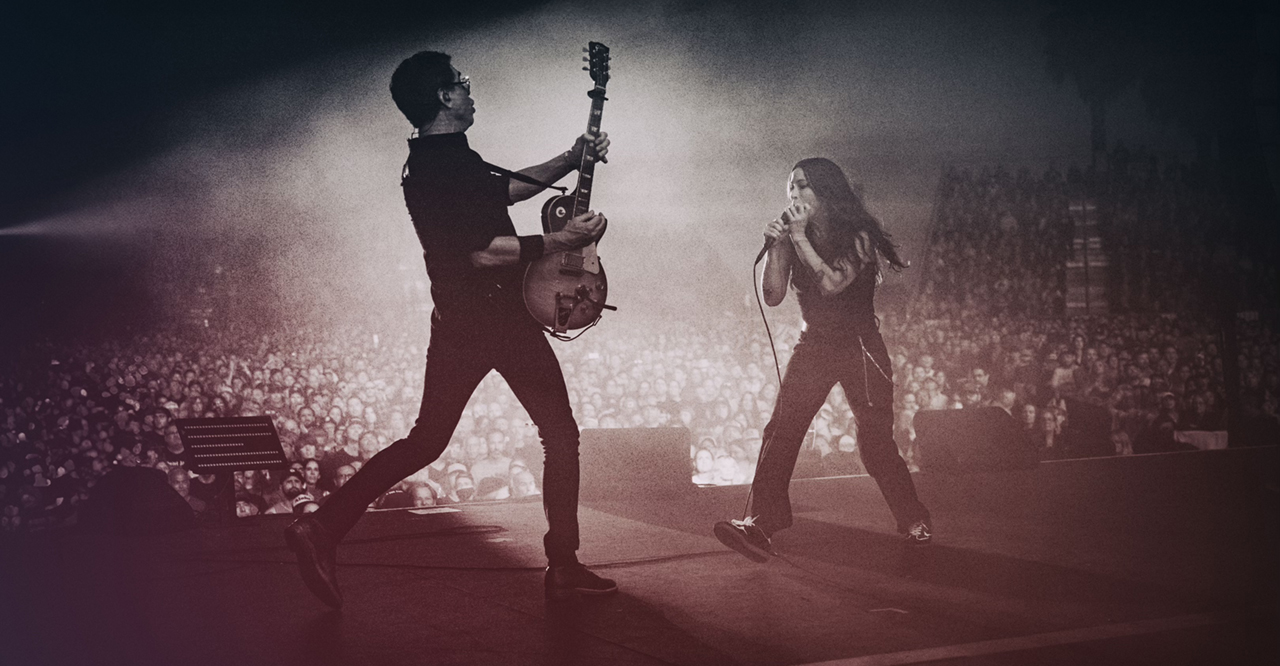
“I was using my Divided by 13 amp and an old copper panel Vox AC30. I brought my ’67 Gretsch 6120, which is such a great guitar, my Custom Shop Tele and my Les Paul Standard with a Bigsby on it. Plus an acoustic or two, I and the version of my pedalboard at the time.”
You also worked with Kelly Clarkson.
“Once in 2013 and again in 2015. Her tour manager had worked with me with Alanis, so he recommended me for the gig. First time I was filling in for stage-left player Corey Churko, then for stage-right guitar player Aben Eubanks. I had to learn each of their parts so that I could fit into what the band had been doing.
“In 2013 we did this Christmas special for TV and a few live shows. In 2015, there were some more live shows. Kelly is amazing and her band is excellent.”
What gear did you use?
“I can’t remember what amp I used the first time. I got a really nice Candy Apple Red ’64 Tele Reissue from Fender for that Christmas special, because they wanted us all to play red guitars. I still use that one – I’ve since put a Bigsby on it and some quiet Seymour Duncan Tele pickups in.
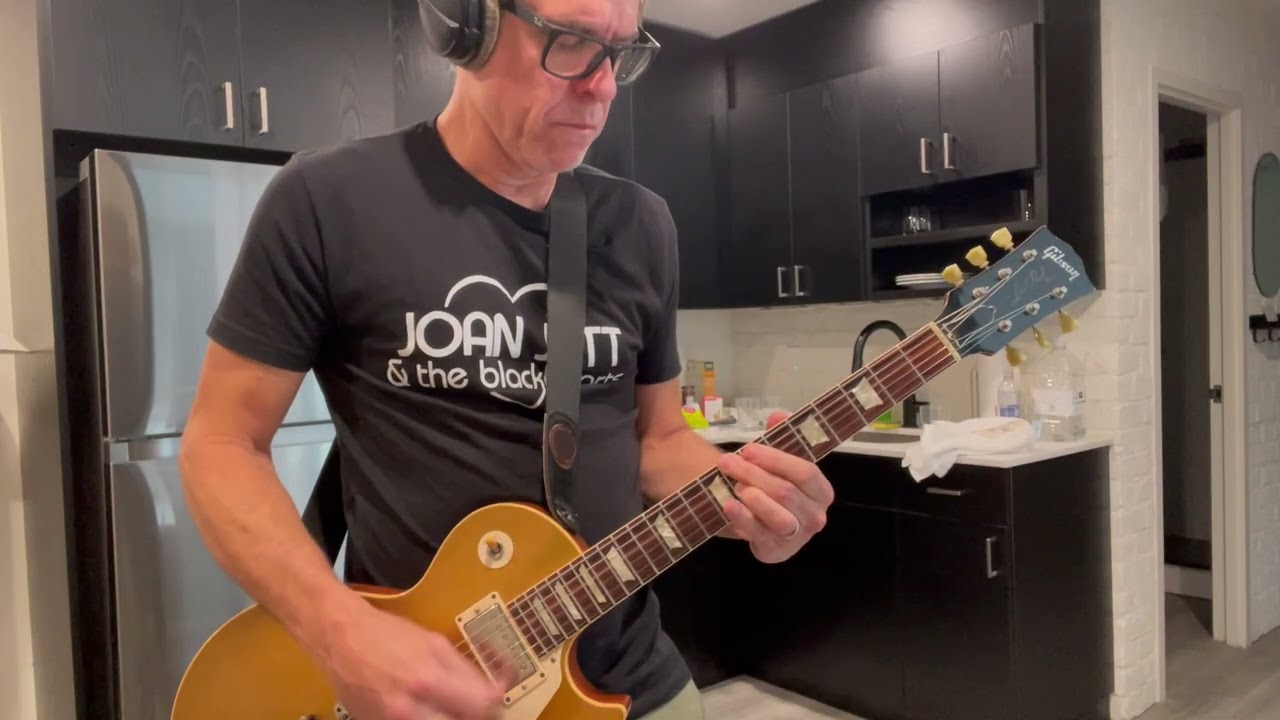
“When I stepped in for Aben I just brought a couple of guitars and used his Fractal setup, since it was all programmed for her set. I brought a Les Paul and a Custom Shop Tele and played a couple of his guitars.
“That was my first experience with Fractal. His tech helped me set up a solo patch for a moment in the show where I got a solo. We used an AC30 patch with some delay and a bit of a slow phase.”
What’s next for you?
If YouTube was around when I was a teenager, I never would’ve left my bedroom!
“When I’m not working with Alanis, I practice as much as I can. My wife and I have a nine-year-old daughter, so that keeps me busy, too. I’m trying to improve and learn new things whenever I can. It’s amazing to have things like YouTube now. If that was around when I was a teenager, I never would’ve left my bedroom!
“I finally started to put a couple of things up on my own YouTube channel, and I have some thoughts about expanding that into something more. We have more touring ahead with Alanis so I’m planning a new pedalboard and prepping for the travel.
“I also want to put something together where I get to play a bunch of fun guitar-based music with a bass player and drummer. It would start off as covers from Hendrix and Clapton, but then maybe turn into something more.”
GIPHY App Key not set. Please check settings